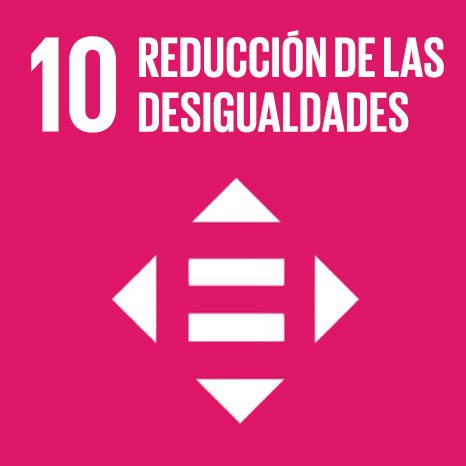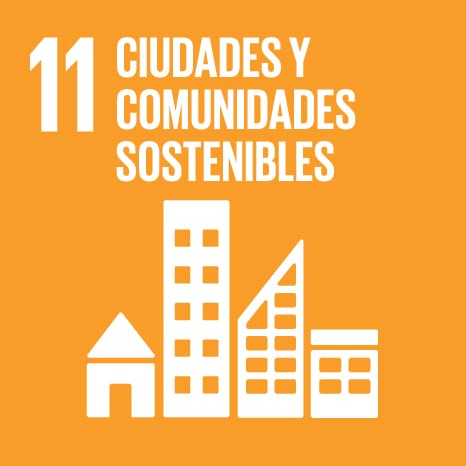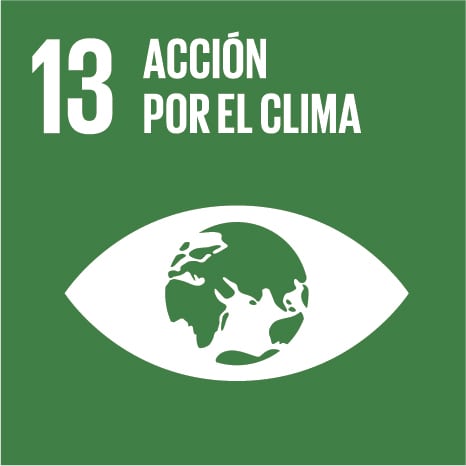R+D+i Project ACC<15'
Accessibility Planning for the 15-Minute City
Accessibility indicators have been around more or less evolving their mathematical formulation for more than 60 years now. During this time, several authors predicted they would become fundamental for a fair and precise city planning but this still has not come true. However, the recent developments in open data, network analysis and accessibility models showcase its potential and could make them more user friendly. At the same time, current urban challenges such as equity, climate emergency or COVID-19 have raised the concept of 15-minute city, based in accessibility.
This project hypothesis is that 15-minute city concepts can be quantitatively modeled through network-based accessibility metrics, which can help breaking the gap between separated policies, specifically concerning mobility planning (e.g. PMUS), land use planning (e.g. PGOU), healthy city planning and sustainable urban development (e.g. A.U.E.). This could be done by making the concepts meaningful and practical and by carefully tailoring operational analysis to their target audience of public officials and professional practitioners.

GO1. To understand the implications and potential of 15-minute city in the implementation of models of healthy and sustainable cities, in order to face urban challenges related to climate change and equity.

GO2. To select and refine accessibility metrics suitable for developing sound and operational indicators that foster the inclusion of the 15-minute city in mobility and city planning tools (AUE, PGOUs, PMUS, Universal Accessibility Plans, etc.).

GO3. To offer an “accessibility planning” solution for practitioners, through a combination of open public data sources, the needs of stakeholders enrolled in the project (public and private sector) and the definition of user friendly indicators in a free-access platform.
Adequacy to Sustainable Development Goals (SDG) and Spanish National Strategy




These general objectives fit within Sustainable Development Goals #11 (Cities), #13 (Climate) and #10 (Inclusion), while, thematically, the project will be focused on one objective of Spanish Urban Agenda (AUE) #5 “Proximity and sustainable mobility”. It also can be noted that the support letter offered by the Urban Policy Sub-directorate of the Spanish Ministry for New Urban Agenda, literally says:
“Therefore, there is a shared interest in promoting activities that, like the aforementioned project, allow the development of accessibility / mobility indicators; provide criteria for the development of related spatial data infrastructures; o recommendations for planning and regulations that provide a scientific basis for the city’s 15-minute rendering.”
Finally, the project adopts the main principles of Spanish National RTD Strategy:
- It has an objective that involves coordination in a joint evaluation of aspects that correspond to policies of different branches of public administration (Principle 1).
- It aims to provide reliable instruments to evaluate plans and projects, which would provide greater objectivity and, therefore, stability in planning (Principle 2)
- Quality of life criteria are included, and social aspects are evaluated (Principle 3).
- As it is an effort for reusing and adding value to public data and to improve local public service efficiency, it has a clear objective of improving the overall efficiency and will allow to know previously the accounts of the projects (Principle 4).
- A gender perspective, although not a specific objective, it’s an underlying principle and has guided team composition (Principle 5).
Funding
The project Accessibility Planning for the 15-Minute City (ACC<15′) is funded by the El proyecto Accesibilidad y Planificación para la Ciudad de 15 Minutos (ACC<15′) is financed with the help of the State Program for R+D+i Oriented to the Challenges of Society, the State Plan for Scientific and Technical Research and Innovation 2017-2020 (PID2020-116584RB-I00)
Team
Main researcher
Patxi J. Lamíquiz. PhD Architect and Professor in the Department of Urban Planning and Territorial Planning of the Higher Technical School of Architecture (ETSAM) of the Polytechnic University of Madrid (UPM)
Research Gate | Google Scholar | Linkedin
Research team
Ester Higueras. PhD Architect and Professor in the Department of Urban Planning and Territorial Planning and member of the research group on Bioclimatic Architecture in a Sustainable Environment (ABIO) of the Higher Technical School of Architecture (ETSAM) of the Polytechnic University of Madrid (UPM)
Resarch Gate | Google Scholar | Linkedin
Nieves Navarro. Architecture Technician. Director of the University-Business Chair in Building Accessibility and professor in the Department of Architectural Construction and its Control at the Higher Technical School of Building (ETS Edificacion) of the Polytechnic University of Madrid (UPM)
Research Gate | Linkedin
Working team
Andrea Alonso. PhD Engineer in Civil Engineering Systems. She is a professor in the Department of Urban Planning and Territorial Planning of the Higher Technical School of Architecture and a member of the Transport Research Center (TRANSyT) of the Polytechnic University of Madrid (UPM)
Google Scholar
Maria Teresa Baquero Larriva. PhD in Sustainability and Urban Regeneration. Postdoctoral Researcher “Recualificación del Sistema Universitario Español, Margarita Salas” Programme funded by the Recovery and Resilience Facility- Next Generation EU (European Commission) (2022-2024).
Research Gate | Google Scholar | Linkedin
Nuria Blanco Fernández. Architect and researcher at the Department of Urban and Regional Planning of the ETSAM (UPM).
Linkedin
Manuel Benito. Architect and researcher at the Department of Urban Planning and Territorial Planning of the Higher Technical School of Architecture (ETSAM) of the Polytechnic University of Madrid (UPM)
Research Gate | Linkedin
José Carpio. PhD in urban planning and professor in the Department of Urban Planning and Territorial Planning of the Higher Technical School of Architecture (ETSAM) of the Polytechnic University of Madrid (UPM)
Research Gate | Google Scholar | Linkedin
Beatriz Martínez Rico. Architect and PhD student in the Sustainability and Urban Regeneration Programme of the Department of Urban and Regional Planning at the Polytechnic University of Madrid.
Linkedin
Emilia Román. DPhD architect, professor in the Department of Urban Planning and Territorial Planning and member of the research group on Architecture, Urban Planning and Sustainability (GIAU+S) of the Higher Technical School of Architecture (ETSAM) of the Polytechnic University of Madrid (UPM)
Research Gate | Google Scholar
Alba Ramírez. Architect, doctoral student and researcher at the Department of Urban Planning and Territorial Planning of the Higher Technical School of Architecture (ETSAM) of the Polytechnic University of Madrid (UPM)
Research Gate | Google Scholar | Linkedin
